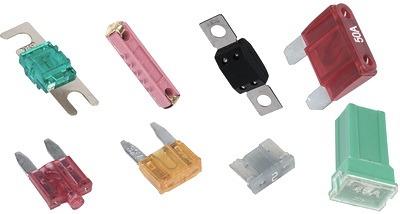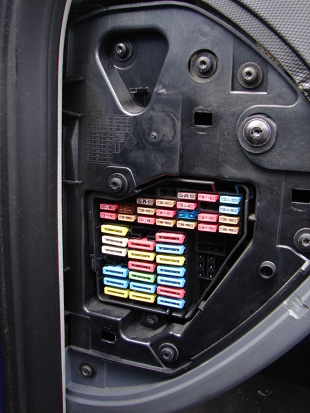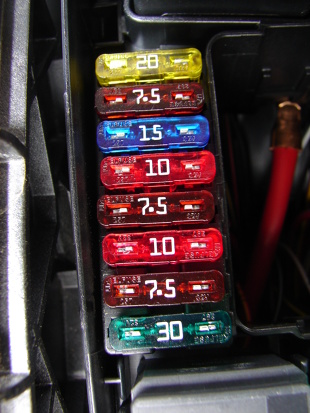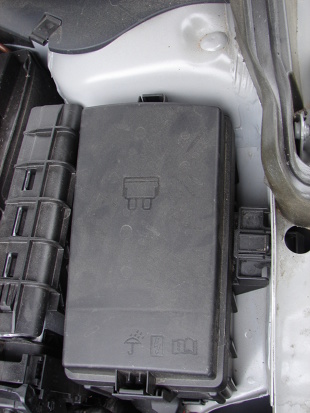
Automotive fuses. Little car electrical system guards
 These are some of the smallest elements in a car's electrical system. However, if they work - protecting the entire system - then we only appreciate how important they are.
These are some of the smallest elements in a car's electrical system. However, if they work - protecting the entire system - then we only appreciate how important they are.
Many drivers may not even know they exist in the car. Fortunately, many never thought about the need for their use in modern cars. And although the technological progress in the automotive industry is huge and the electronics are becoming more and more complex, the simplicity of their work, and most importantly the efficiency, is simply brilliant. Automotive fuses - after all, we are talking about them - have not changed much for years.
See also: driver's license. Code 96 for category B trailer towing
How does it work?
 The operation of a car fuse is ingeniously simple. It protects this electrical circuit and its weakest point. This point is a length of flat strip or round wire of copper, which may be silver-plated, with a cross-section selected so that it burns when the nominal level is exceeded.
The operation of a car fuse is ingeniously simple. It protects this electrical circuit and its weakest point. This point is a length of flat strip or round wire of copper, which may be silver-plated, with a cross-section selected so that it burns when the nominal level is exceeded.
In modern passenger cars, several types of fuses are used with different amperage values, above which they are destroyed. The use of several dozen fuses in the car's on-board network is now a necessity, since different circuits perform different functions and it is reasonable that possible failures in one circuit do not directly affect others, especially those responsible for safety.
Mini, regular, maxi...
 There are currently three main types of flat fuses: regular (also known as standard), mini, and maxi. The first and second are used to protect smaller (less loaded) circuits and are located mainly in the fuse box inside the car. Maxi fuses are used to protect the main, high current circuits and are located in the engine compartment, very often next to the battery.
There are currently three main types of flat fuses: regular (also known as standard), mini, and maxi. The first and second are used to protect smaller (less loaded) circuits and are located mainly in the fuse box inside the car. Maxi fuses are used to protect the main, high current circuits and are located in the engine compartment, very often next to the battery.
Cube fuses "female" and "male" are also used quite rarely, and flat fuses are quite large.
Once upon a time, glass (tubular) and cylindrical - plastic fuses were popular. The former are still present today, for example, as current protection in cigarette lighter plugs. Glass and plastic can be found in the electrical installations of old cars.
See also: How to care for the battery?
Colour matters
 The most important parameter of any fuse is the maximum current it can handle before it blows.
The most important parameter of any fuse is the maximum current it can handle before it blows.
In order to quickly determine the maximum intensity for which each of the fuses is designed, they are marked with the corresponding colors.
Mini and conventional fuses:
- gray - 2A;
- purple - 3A;
- beige or light brown - 5 A;
- dark brown - 7,5A;
- red - 10A;
- blue - 15A;
- yellow - 20A;
- white or transparent - 25A;
- green - 30A;
- orange - 40A.
Maxi fuses:
- green 30A;
- orange 40A;
- red - 50A;
- blue - 60A;
- brown - 70A;
- white or transparent - 80A;
- purple - 100A.
Most modern automotive fuses, despite the fact that they are colored, have a transparent body. Thanks to this, it is easier and faster to diagnose which of them burned out and which of the circuits does not work.
Where can I find the fuse block?
 Typically, fuse boxes are mounted in two places: under the engine hood on the driver's side or under the dashboard on the left side of the driver, less often on the passenger side.
Typically, fuse boxes are mounted in two places: under the engine hood on the driver's side or under the dashboard on the left side of the driver, less often on the passenger side.
The boxes in the engine bay are relatively easy to recognize by their boxy, rectangular shape. Finding boxes inside the car is more problematic. For example, in VW cars, they were located on the left side of the dashboard and were closed with a plastic cover that was perfectly integrated into the dashboard itself. Anyone who got into the car for the first time and did not have instructions with him could even spend several tens of minutes fruitlessly searching for the fuse base. That is why it is so important to know in advance where the box is located in this car. You should also remember that boxes very often have snap-on lids. To open them, the latch has to be sharpened with something. So a small screwdriver or even a penknife will come in handy.
Until recently, manufacturers placed pictograms (drawings) on the box body describing which circuit this fuse protects. This is now an increasingly rare practice. And again, you have to refer to the instruction manual. It may be necessary to make a photocopy of the page describing each circuit and keep them in the glove compartment - just in case.
Burned out and...
 Fuses most often blow out as a result of our inattention or inattention (for example, a short circuit of the installation when connecting additional devices to the cigarette lighter socket, installing a radio or replacing light bulbs). Less often due to a malfunction of individual elements of equipment, i.e. wiper motors, rear window heating, ventilation.
Fuses most often blow out as a result of our inattention or inattention (for example, a short circuit of the installation when connecting additional devices to the cigarette lighter socket, installing a radio or replacing light bulbs). Less often due to a malfunction of individual elements of equipment, i.e. wiper motors, rear window heating, ventilation.
As the fuses in the box get tighter, automakers are inserting plastic tweezers into the boxes. Thanks to us, removing a blown fuse has become easier, faster and, most importantly, safer.
When we find out which of the fuses was damaged, we must replace it with an identical one in design and amperage. If the blown fuse was caused by a short circuit, replacing it with a new one should fix the problem. However, a newly blown fuse should give us a signal that the problem has not been fixed and we should look for its causes.
Under no circumstances should fuses with a current higher than recommended by the vehicle manufacturer be used. This may temporarily solve our problems, but the consequences can be very costly, and the risk of damage to the installation or fire is enormous.
Also, you should not try to repair blown fuses by shunting them with a piece of thin copper wire - this is an extremely irresponsible action.
In an emergency, the so-called "Route" can be saved by inserting a fuse from a circuit that does not directly affect traffic safety, such as a radio or cigarette lighter. However, remember that its trip current should be the same or slightly less than that originally used. We must also consider such a solution as exceptional and replace it with a new one as soon as possible. The best way to avoid this situation is to carry a full set of new fuses with basic ratings in the car. They do not take up much space and can be very useful.
See also: How to care for the battery?